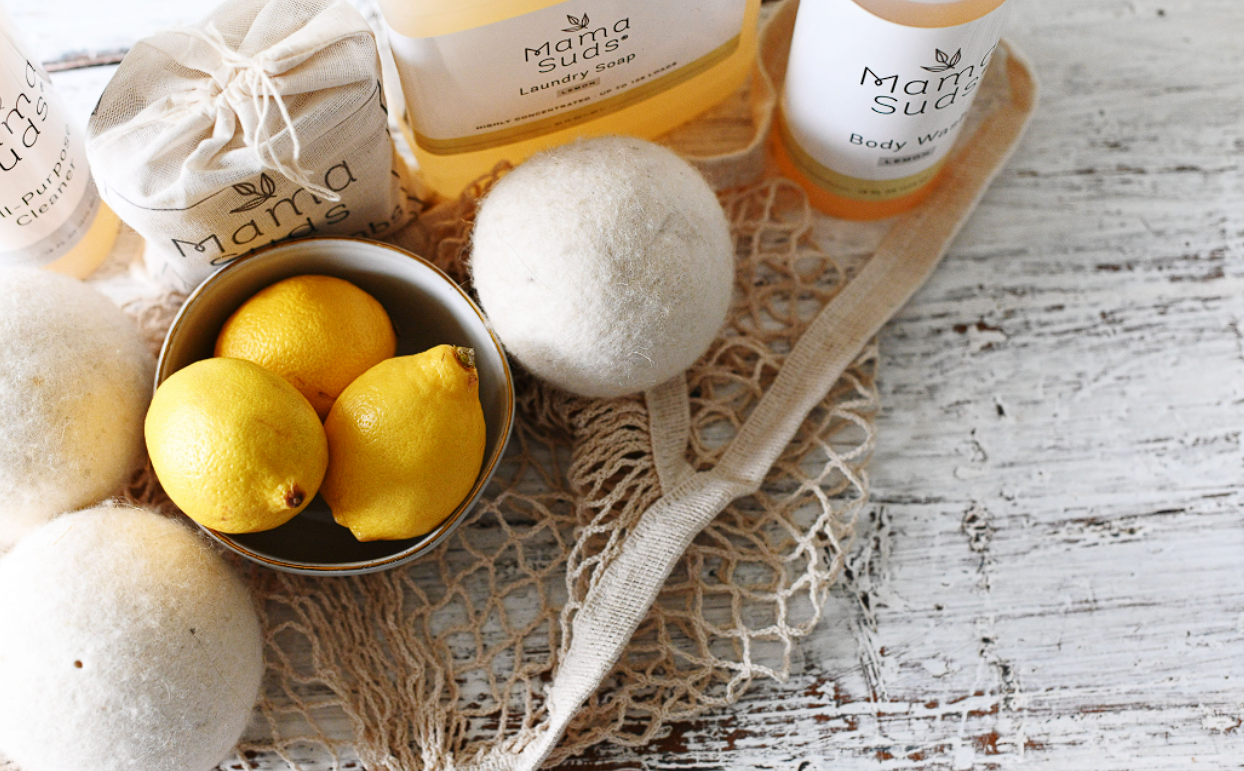
The CleanSuds Blog
Where education and truthful facts are easy to come by.
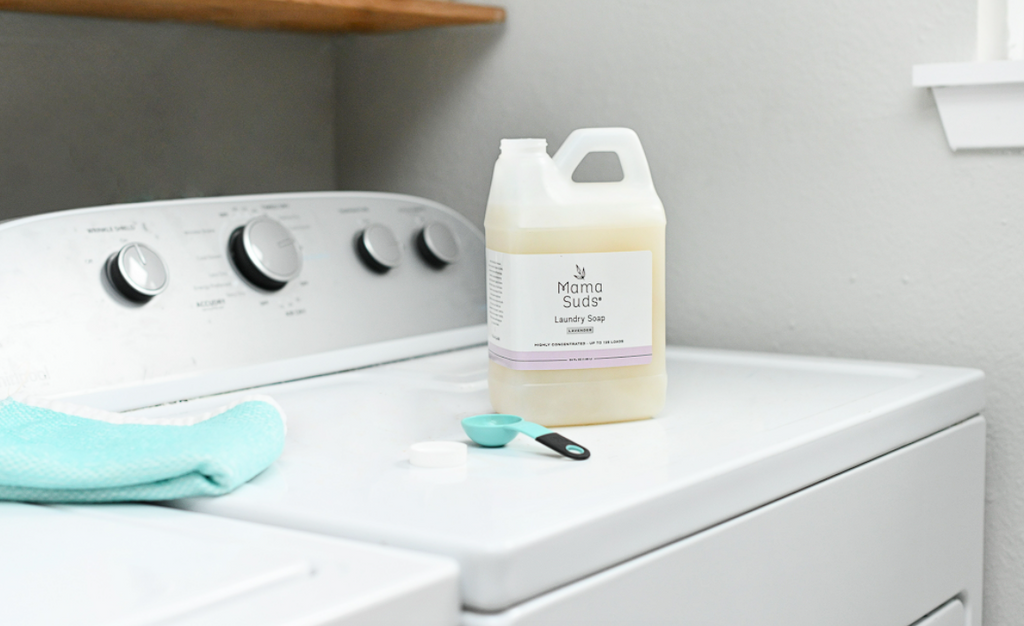
10 Eye-Opening Truths About Non-Toxic Laundry Detergent
(And How to Make the Switch Without Sacrificing Clean Clothes!)
1. The Problem: Your Laundry Detergent is a Cocktail of Hidden Toxins
Most conventional laundry detergents contain synthetic fragrances, optical brighteners, and surfactants that leave behind a toxic residue on clothes. These chemicals can irritate skin, disrupt hormones, and even affect respiratory health.
Unexpected Solution:
Switch to a truly non-toxic, residue-free detergent made with simple, safe ingredients like castile soap and mineral-based boosters. The key? Ditching unnecessary additives that do more harm than good.
Benefit:
Your clothes will be clean without exposing your skin (or your kids’) to harmful chemicals, reducing allergic reactions and long-term health risks.
💡 Three Quick Tips to Get Started:
- Check the ingredient list for SLS, phthalates, and optical brighteners—if they’re there, ditch it!
- Try washing a load with only hot water—if suds appear, that’s detergent residue left behind.
- Swap to a concentrated, plant-based detergent like MamaSuds to clean effectively without toxins.
2. The Problem: "Free & Clear" Isn't Actually Free of Toxins
Many detergents labeled “free & clear” still contain synthetic preservatives and hidden irritants like formaldehyde-releasing agents.
Unexpected Solution:
Look for brands that fully disclose ingredients instead of hiding behind vague labels like “proprietary blend.” A good rule of thumb? If you can’t pronounce it, don’t use it!
Benefit:
You'll avoid hidden irritants, reducing skin flare-ups and allergic reactions for your entire family.
💡 Three Quick Tips to Get Started:
- Research your detergent on EWG’s Skin Deep Database to see how safe it really is.
- Switch to a detergent made with only mineral and plant-based ingredients (like castile soap).
- Test your current detergent—wash a shirt with just hot water and smell it. If it still has fragrance, it's leaving behind residue.
3. The Problem: Fabric Softeners Are Just Chemical Coatings
Fabric softeners and dryer sheets leave a layer of artificial chemicals on clothes that mimic a “soft” feel but don’t actually improve fabric quality.
Unexpected Solution:
Use vinegar in the rinse cycle and wool dryer balls instead of toxic softeners—your clothes will be naturally soft and static-free.
Benefit:
Your laundry will smell fresh, feel soft, and be free from unnecessary chemical exposure.
💡 Three Quick Tips to Get Started:
- Add ½ cup of vinegar to your washer’s rinse cycle instead of fabric softener.
- Toss wool or up cycled dryer balls in with your clothes to reduce static and soften fabric naturally.
- Avoid synthetic “clean scents” by using essential oil-infused wool balls for a light, natural fragrance.
4. The Problem: Your "Fresh Laundry" Smell is Actually Synthetic Fragrance
The artificial scent in most detergents is made from a cocktail of undisclosed chemicals that can trigger allergies, asthma, and headaches.
Unexpected Solution:
Ditch fake fragrances and embrace true freshness by washing with unscented, residue-free detergent. If you love a scent, add a few drops of pure essential oil to wool dryer balls instead.
Benefit:
Your laundry will actually smell clean instead of masking odors with harmful chemicals.
💡 Three Quick Tips to Get Started:
- Choose unscented detergents to avoid hidden synthetic fragrances.
- Add a few drops of lavender or lemon essential oil to wool or up cycled dryer balls for a natural scent.
- Air-dry your clothes outside when possible—the fresh air works wonders.
5. The Problem: Residue from Conventional Detergent is Trapped in Your Clothes
Most detergents don’t fully rinse out, meaning chemicals stay on your clothes and transfer to your skin all day long.
Unexpected Solution:
Run a detox wash by stripping your clothes with castile soap, oxygen powder, borax, and washing soda to remove built-up detergent residue.
Benefit:
Your clothes will feel truly fresh, and your skin won’t be absorbing leftover chemicals.
💡 Three Quick Tips to Get Started:
- Fill your washer with hot water, add ½ cup borax + ¼ cup washing soda + ¼ cup oxygen powder, and ½ of castile soap, and let it soak for an hour.
- Switch to residue-free detergent to keep clothes truly clean.
- Use an extra rinse cycle to remove any lingering detergent.
6. The Problem: Your Detergent Might Be Killing Your Microbiome
Harsh detergents strip away natural oils from clothing and destroy good bacteria on your skin, leading to irritation.
Unexpected Solution:
Choose a gentle, residue-free detergent that cleans without stripping natural protective oils from your skin or clothes.
Benefit:
Your skin will stay healthier, and clothes will feel softer without unnecessary wear and tear.
💡 Three Quick Tips to Get Started:
- Look for residue-free detergents that won't leave behind unwanted ingredients.
- Avoid antibacterial detergents—they kill good bacteria too.
- Wash clothes in cooler water to preserve fabric and skin microbiomes.
7. The Problem: Your Baby’s Clothes Are Covered in Harsh Detergent Residue
Baby skin is extra sensitive, yet most baby detergents still contain sulfates and synthetic softeners.
Unexpected Solution:
Wash baby clothes with the same non-toxic detergent you’d trust for yourself—no need for separate products!
Benefit:
Fewer rashes, less irritation, and peace of mind knowing your baby’s clothes are truly clean.
💡 Three Quick Tips to Get Started:
- Wash baby clothes in hot water first to strip off any factory residues.
- Use a clean-rinsing, non-toxic detergent without sulfates or fragrances.
- Skip dryer sheets—air-dry or use wool/upcycled dryer balls to keep baby clothes soft.
8. The Problem: DIY Laundry Detergents Don't Actually Work Well
Many DIY recipes lack proper surfactants and leave buildup, leading to dingy clothes over time.
Unexpected Solution:
Instead of DIY, use a concentrated, eco-friendly detergent with effective yet safe ingredients.
Benefit:
You'll get truly clean clothes without buildup or ineffective washing.
💡 Three Quick Tips to Get Started:
- Look for a detergent with saponified oils (like castile soap) for real cleaning power.
- Avoid borax-heavy DIY recipes—they can be harsh on clothes. A little bit of borax goes a long way.
- Test your detergent by soaking a clean shirt in warm water—if the water turns murky, it’s leaving residue.
9. The Problem: Liquid Detergents Waste Water & Plastic
Most commercial liquid detergents are 90% water and require heavy plastic packaging.
Unexpected Solution:
Use concentrated refills or powdered detergents to reduce waste.
Benefit:
Less plastic waste, lower carbon footprint, and a cost-effective laundry routine.
💡 Three Quick Tips to Get Started:
- Buy laundry concentrate refills instead of bulky plastic jugs.
- Store detergent in a glass jar to eliminate single-use plastic.
- Use a pre-measured scoop to avoid wasting detergent.
By switching to a non-toxic, residue-free detergent like MamaSuds, your clothes, skin, and home will be cleaner, healthier, and safer—without the scary chemicals hiding in mainstream brands. 🚀 💚
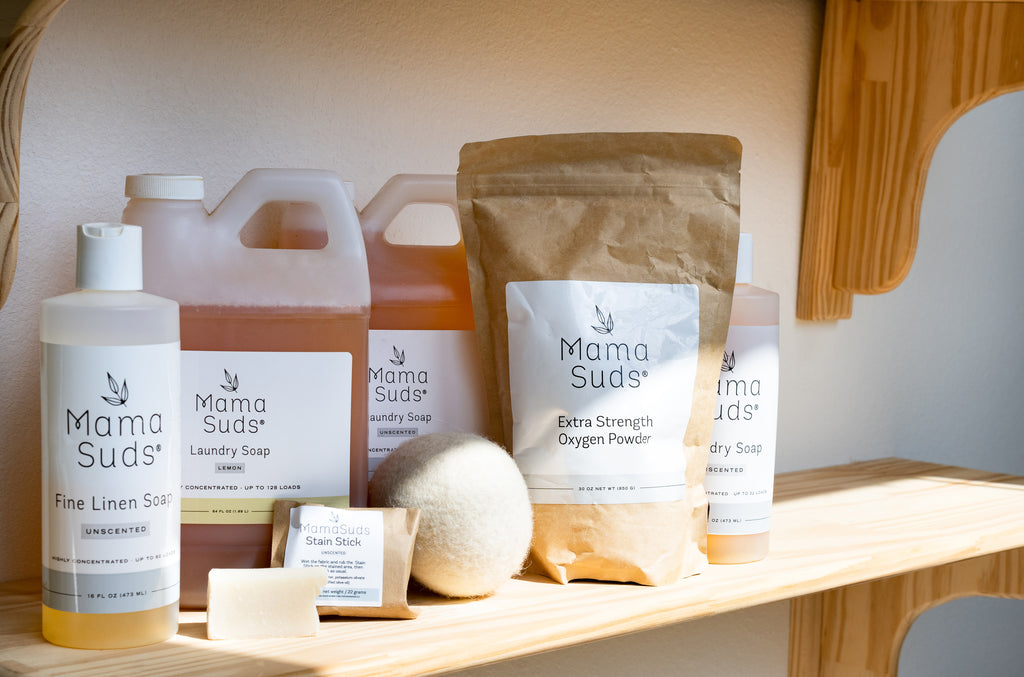
A Guide to Whiter Clothes with MamaSuds Oxygen Powder
continuation from MamaSuds Oxygen Powder: Your Eco-Friendly Cleaning Powerhouse ...
...
Now that you've been introduced to the wonders of MamaSuds Oxygen Powder as an eco-friendly cleaning buddy, let's dive right into how you can harness its power to achieve brighter and whiter clothes!
How to use your MamaSuds oxygen powder for whitening clothes?
- Sort your laundry, ensuring that you separate white or light-colored garments from dark-colored ones to prevent color transfer.
As per MamaSuds specified instructions for using Oxygen Powder as a pre-treatment and stain remover:
-
Create a paste by combining a small amount of powder with hot water and gently rub it into the stain. Allow it to sit for 20 minutes before adding the garment to the washing machine. For heavily soiled stains, mix 2 tablespoons of powder per gallon of hot water and soak heavily stained items for up to 12 hours.
-
Follow the care label instructions on your garments and fill the washing machine with water at the appropriate temperature.
-
Add the recommended quantity of oxygen powder to the water in the washing machine.
-
Place your garments into the washing machine and initiate the wash cycle. Let the oxygen powder work its magic as it breaks down stains and brightens your clothes.
-
Once the wash cycle is finished, take out your clothes from the machine and check for any remaining stains. If necessary, you can repeat the process or treat specific areas again before drying.
Well, it doesn't end here. As innovative as you are, we are currently preparing more references you can swiftly look at to maximize the power of your Oxygen Powder. And if you're new to The CleanSuds Blog, we're actually talking about 10 (or more) Other Ways of Using Oxygen Powder.
How to Make Your Own Laundry Detergent
• For Powdered Laundry Soap: grate 1 cup of MamaSuds Castile Bar Soap, mix 2 cups of Washing Soda (sodium carbonate) and 1 cup of Borax (sodium borate), mix in soap flakes and store in airtight container
• Use 2-3 Tablespoons per load for regular washer; use 1 Tablespoon or less for HE Washer
• For Liquid Laundry Soap: dissolve 1/2 cup Borax and 1 cup of Soda Wash into warm water on a stove while stirring; add essential oils for scent if desired; add to 2 cups of MamaSuds Castile Soap; let cool completely
• Use 1/4 cup per load for regular washer; use 1-2 Tablespoons or less for HE Washer
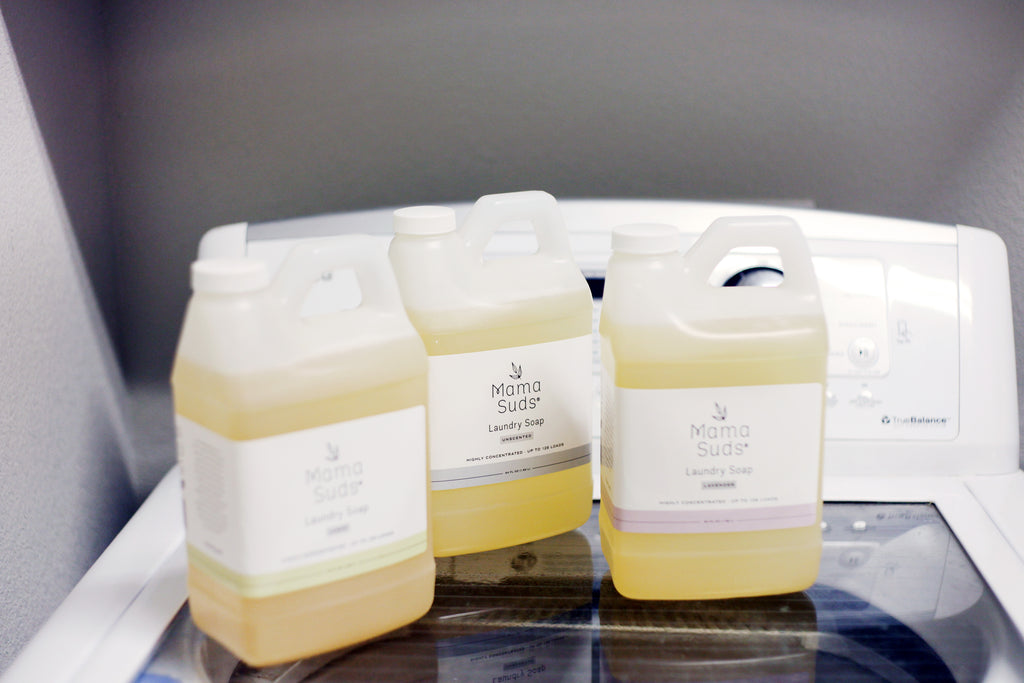
What is the Full Ingredient List of MamaSuds Laundry Soap?
Answer: Maybe you're thinking to yourself, it's on the product page isn't it?
Actually it's on there twice but that's not the point.
The point is that you are all feeling totally over the "duped again" feeling, am I right? You think you have found a clean laundry product then you get the product and it's not the same as what was listed on the website (or some variation of this).
So even though it's on our website a lot, we don't mind ingredient questions at all (we love them) and totally understand why it's asked so much.
Here is the entire ingredient list: water (distilled or RO), potassium olivate which is also called saponified olive oil (our very own castile soap), sodium carbonate, and sodium borate.
If you get the lemon or lavender scent then we use pure essential oils (nothing synthetic).
That's it!
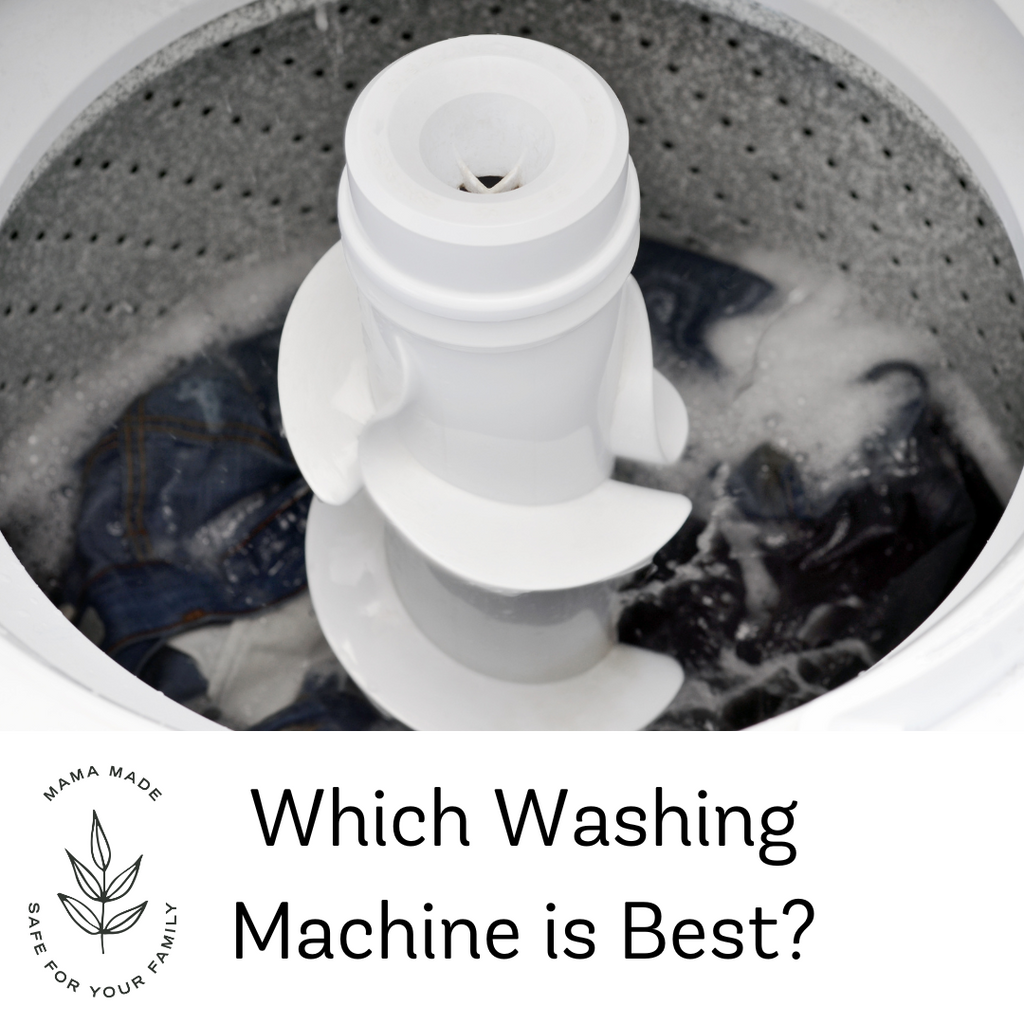
Which Washing Machine is Best?
Which Washing Machine is best?
I've been knee deep in laundry questions and troubleshooting for over a decade and the question I get asked the most is, "What Washing Machine is the best?" There are a lot of factors to consider when choosing a washing machine, but don't worry, I'm here to guide you through it. By the end of this post, you'll know exactly which machine is right for your home. So let's get started!
Top-loading washing machines are less expensive than front-loading washing machines
The cost of a washing machine isn’t something that many people eagerly anticipate, yet it’s an unavoidable expense. But if you are looking for major savings, then you should consider investing in a top-loading washing machine. Not only are they less expensive than their front-loading counterparts, they will also save you a lot of backache; after all, bending down each time is not the greatest fun. Plus, changing the settings to suit your laundry needs can be done with minimal hiccups. A world full of stains stand no chance against a top-loading washing machine!
Top-loading washing machines clean better than front-loading machines
Top-loading washing machines might not be as energy-efficient as their front-loading counterparts, but they definitely clean better. Why did I make that bold statement? Because I've talked to thousands of people and the majority of people who have owned both types of machines state that the top-loading machines wash better. Why? That's because front-loading machines rely on tumbling clothes in order to clean them, and that simply doesn't work as well as the good old-fashioned method of using water and soap to scrub them clean. So if you're looking for a machine that will get your clothes really clean, you should go with a top-loader with an agitator. If you live in an area where you pay for water or your region has a water shortage, look for a top-loading high efficiency (HE) washer.
Top-loading washing machines break less than front-loading washing machines
If you're wonder which type of washing machine needs less maintenance here is your answer: top-loaders break less often. Studies have found that front-loaded machines experience more breakdowns due to their complex designs and electronics, whereas top-loaded models tend to be simpler in function and construction. So while front loaders may save energy with their lower water level requirements, they might put you at risk of a much bigger headache down the line if something goes awry! Ultimately, if reliability is your main concern when buying a washing machine, your best choice may still be a trusty top loader. What's even better than a top loading machine with an agitator? One that has mechanical settings instead of electronic; it's much easier and cheaper to fix.
What are the top 3 top loading washing machines
When it comes to top loading washing machines, Speed Queen is unrivaled and takes the cake every time. Speed Queens are a powerhouse for spinning clothes clean and fast— plus, an extra spin cycle afterwards to minimize drying time. The GE 5.3 Cu. Ft. High-Efficiency Top Load Washer with Agitator is another great option, as its deep fill feature aids in tackling even the toughest loads. Last but not least the Whirlpool 4.8 cu. ft. Top Load Washer with 2 in 1 Removable Agitator. With Speed Queen, GE, and Whirlpool vying for third place — these are the top 3 brands that MamaSuds customer love.
Overall, it is clear that top-loading washing machines offer a number of advantages when compared to front-loading washing machines. Not only are they cheaper than their front-loading counterparts, but they use less energy and clean better as well. Plus, their ease-of-use and the fact that you don't have to strain yourself by bending down to load or unload them make them a great choice for those who suffer from mobility issues.
On top of all of this, they don't even require special detergents like front-loading washing machines do! So why not save some money while being kind to the environment AND your back at the same time? It would appear that one possible way of ticking all of these boxes would be with a top-loading washing machine. What type of washing machine do you have and would you recommend it? Let us know in the comments below!
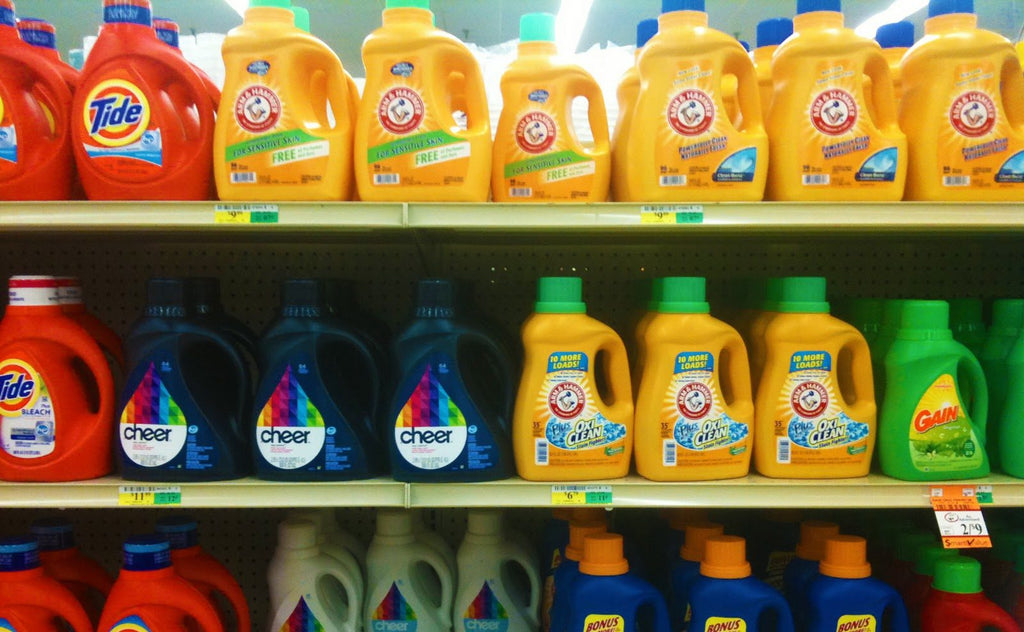
How to avoid 1,4 Dioxane

The Top 3 Ingredients to Avoid in Laundry Detergent
Toxic chemicals may be hiding in your laundry detergent. Find out what you need to know to stay safe and healthy and get your laundry clean.
Doing the Laundry is the Worst. Okay, so maybe a few people like one aspect of laundry. But most hate it. I like putting my laundry into the washer and starting it. But then that's when I wish the Laundry Fairy would finish the job for me! Who can relate?
Unless you live in a nudist colony, your skin is touching fabric 24/7, so what you use to wash your laundry is important to your health. Conventional laundry detergent (and many greenwashed "natural" ones too!) contains many unhealthy ingredients that can severely impact your health. In fact, your laundry room products are some of the most toxic cleaning chemicals in your house!
With so much to sort through on product labels (if your detergent lists the ingredients on the label at all), it can be hard to sort through the good, the bad and the greenwashed. We have some ingredients to steer clear of when you are looking at a safe and healthy detergent.
1. Fragrance
Fragrances in laundry products can lead to skin irritation (which can be the cause of rashes, eczema, and itching). A big problem with fragrance is that companies can list them as one ingredient without listing all the components. Why does this matter? Most fragrance is synthetic and contains both phthalates and petrochemicals (which is bad for the environment) which do not have to be disclosed. These components can cause headaches, asthma attacks, and skin irritations that don't always show up right away. They build up in our system and cause a gradual overload.
“Fragrance is considered to be a trade secret, so brand formulas are proprietary and the individual ingredients are not required to be listed on the label,” explains Tonya Harris, an award-winning environmental toxin expert and the creator of the Slightly Greener Method. “Fragrances in detergent can be made up of dozens of ingredients, of which some may be allergenic [and] toxic to the brain and nervous or respiratory system.”
Bottom line: stick with essential oils (real ones!) or go unscented, and stay clear of the word FRAGRANCE and PARFUM.
2. Ingredients that end in "-ETH"
Ethoxylated ingredients are treated with ethylene oxide (a known carcinogen) when it's processed. A by-product of this process is 1,4-dioxane (another carcinogen) which is absorbable through the skin. 1,4-dioxane won't be listed as an ingredient on your products so it's important to stay away from ingredients that when processed create 1,4-dioxane as a by-product. Companies use ethoxylated ingredients to stabilize their formula so the ingredients won't separate.
Bottom line: steer clear of ingredients that end in "-eth", polysorbates, phenoxyethanol, and PEGs.
3. Sulfates
We have been conditioned in the last 100 years to believe that soap/detergent must foam or lather in order to clean. Sulfates are found in so many everyday products; everything from shampoo to toothpaste, and laundry detergent. They are a skin irritant that doesn't always show up as an immediate reaction.
Bottom line: avoid sodium laurETH sulfate and sodium lauryl sulfate.
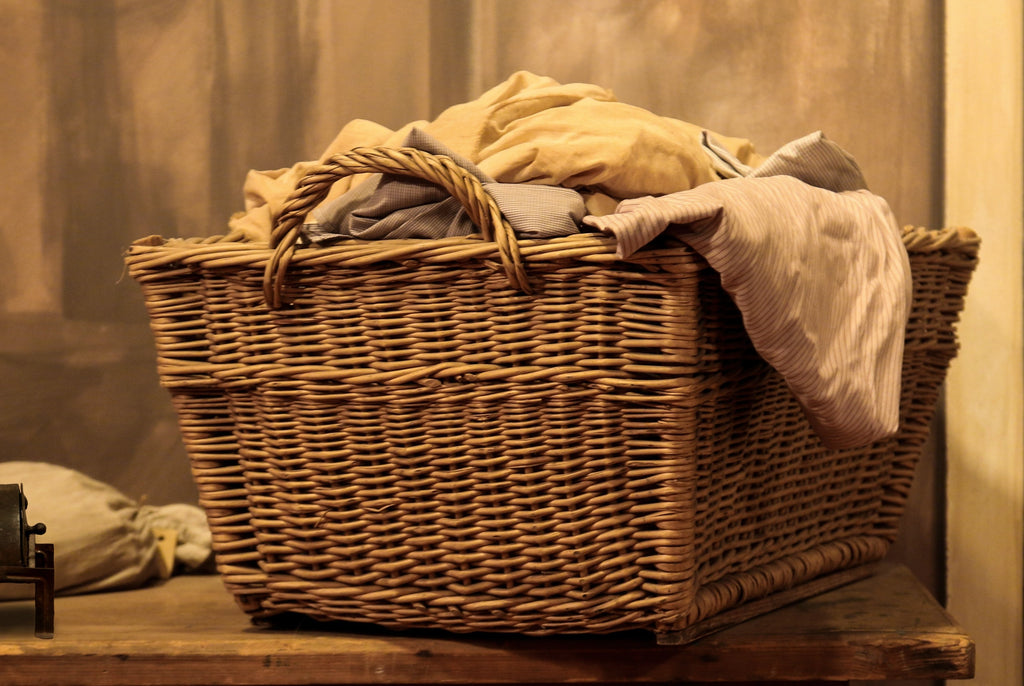
How to Strip your Laundry
• Workout clothes, bedding and towels are likely to be the biggest accumulators of residue.
• To deep clean clothes, a stripping recipe consisting of Borax, Washing Soda, Oxygen Powder and Soap should be used.
• To strip laundry, separate colors from whites; submerge items in hot water with the cleaning ingredients; soak for several hours; drain and transfer to washing machine and wash on hot with extra rinse cycle.
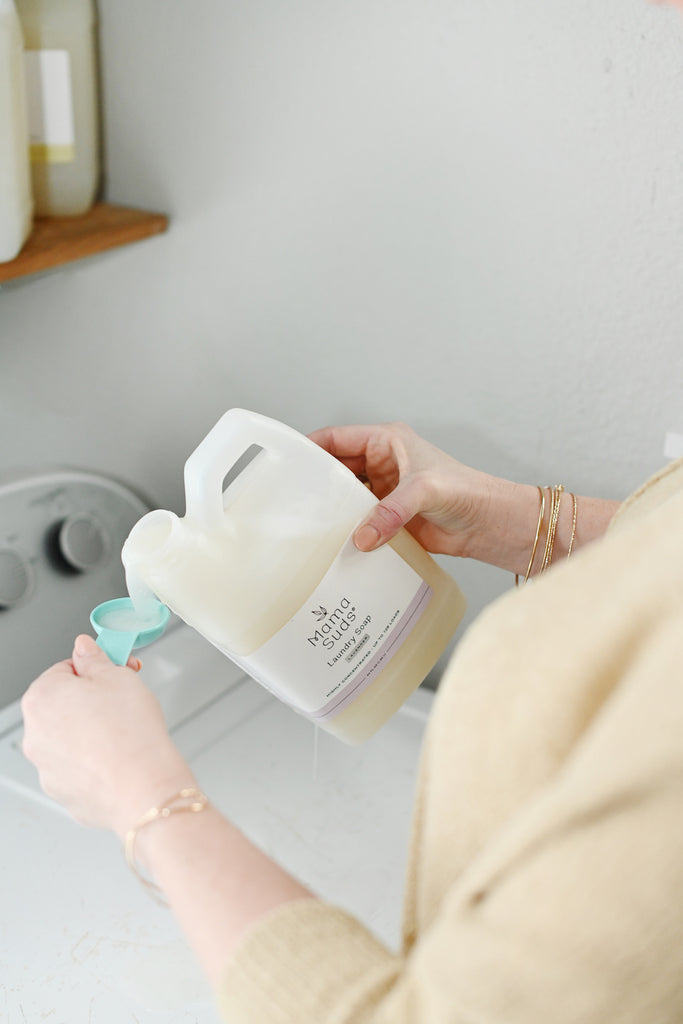
Using All-Natural Laundry Soap in HE Washers
• Products used in HE washers should have the HE logo to certify use in these washing machines.
• Quality all-natural laundry detergents do not ruin HE washers, however it is important to be aware of ingredients such as excess fatty acids which can cause build up and residue.
• All-natural laundry detergents will save you from being exposed to chemicals, but making your own supplies careful measuring and ratio considerations.
• It is suggested to opt for a professionally made all-natural laundry detergent that has been tested for compatibility with HE washers or use one that has a clean soap that's not superfatted.


